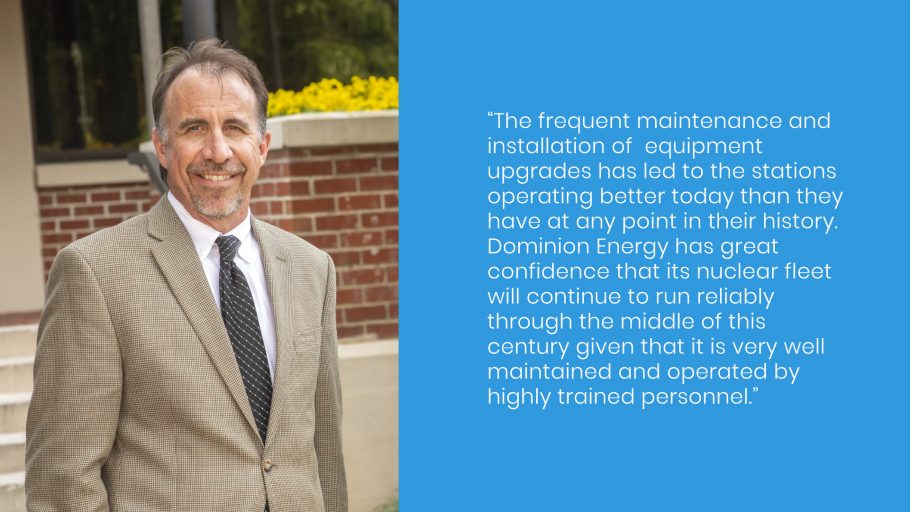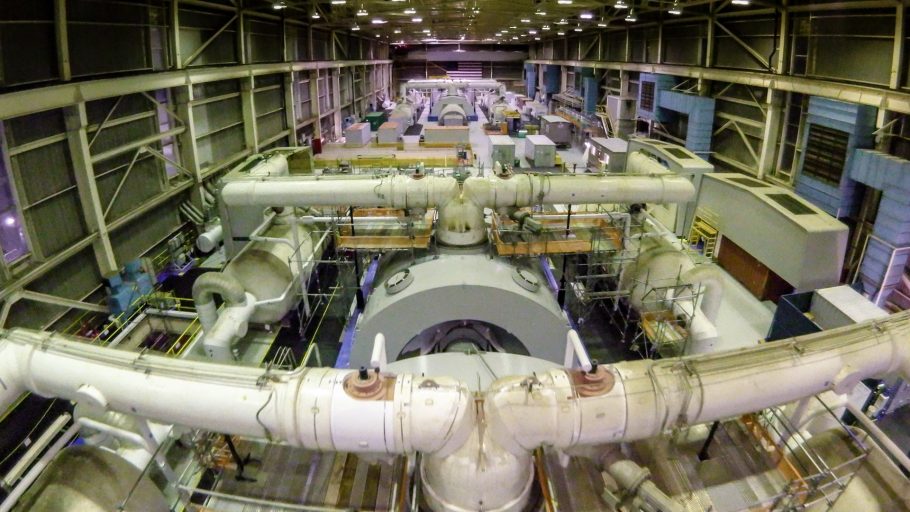Decarbonizing the economy is increasingly becoming the rallying cry for the nation. President Biden has announced goals for electrifying half of the nation’s vehicle fleet by 2030. The United Nations’ recent Intergovernmental Panel on Climate Change has called on every nation to reduce their greenhouse gas emissions sharply to avoid the earth’s temperature rising even more. In the realm of electricity generation, this will mean construction of additional renewable generation, like solar and wind, and increased reliance on existing carbon-free, base-load generation, like nuclear energy.
In recognition of this, last year, the Virginia General Assembly passed the Virginia Clean Economy Act (VCEA), which was signed into law by Governor Ralph Northam on April 11, 2020. The VCEA is designed to position Virginia as a leader in the fight against climate change by requiring electric utilities to close down carbon-emitting generation on an accelerated timeline, in order to pave the way for renewables like offshore wind and other carbon-free generation, like nuclear energy. The VCEA is aligned with Dominion Energy’s own goals for its electricity to be reliable, affordable, and clean.

Dominion Energy owns and operates four reactors divided between two sites in Virginia, North Anna Power Station in Louisa County and Surry Power Station in Surry County. The two reactors at Surry produce 1,676 megawatts of electricity, whereas the slightly larger reactors at North Anna produce 1,892 megawatts of electricity. Combined, the two sites produce enough electricity to meet the needs of approximately 31 percent of Dominion Energy’s 2.5 million customers. They also represent 95 percent of the carbon-free electricity generated in the state.
Dominion Energy also owns and operates three more reactors, two in Connecticut at Millstone Power Station and one at V.C. Summer Nuclear Generating Station in South Carolina. Being a large fleet operator affords Dominion Energy opportunities to improve efficiencies, harness buying power, and share best practices and expertise. This has resulted in Dominion Energy’s fleet being recognized as an exemplary performer in the industry with a capacity factor of more than 90 percent year after year (capacity factor is a measurement of the time that a unit is online in a year).
Nuclear energy, solar and wind together create a balanced mix that will help Dominion Energy get to a carbon-free future. Nuclear energy’s high-capacity factor makes it a perfect accompaniment to solar and wind. When the sun is not shining or the wind is not blowing, nuclear energy continues to produce electricity. Nuclear energy is the only carbon-free source of generation that produces electricity 24 hours a day, seven days a week, 365 days a year.

Every 18 months, one of Dominion Energy’s reactors is shut down for refueling. Refueling outages last about 30 days. During that time, maintenance is performed on the shutdown systems, about a third of the fuel in the reactor is replaced, and equipment upgrades are installed. The reactor is then restarted with the goal of operating for another 18 months before shutting down for another refueling outage. The frequent maintenance and installation of equipment upgrades has led to the stations operating better today than they have at any point in their history. Dominion Energy has great confidence that its nuclear fleet will continue to run reliably through the middle of this century given that it is very well maintained and operated by highly trained personnel.



